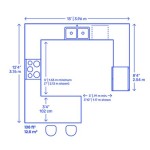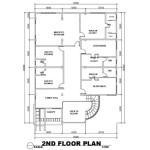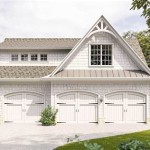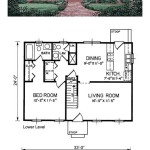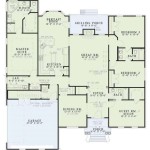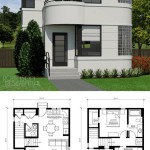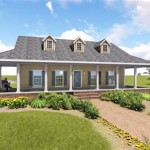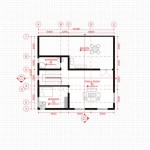Easy Bird House Plans: A Guide to Welcoming Avian Guests
Providing a suitable habitat for birds can be a rewarding experience, contributing to local biodiversity and offering the chance to observe these fascinating creatures up close. Constructing a birdhouse is a relatively simple project that can be accomplished with basic woodworking skills and readily available materials. This article outlines several easy bird house plans, detailing the key considerations for design, construction, and placement to ensure a safe and welcoming environment for birds.
Understanding Bird House Design Principles
The primary goal of a birdhouse is to offer shelter from the elements and protection from predators. A well-designed birdhouse will mimic the natural cavities birds use for nesting. Understanding the preferences of different bird species is crucial for creating a suitable dwelling. Factors such as entrance hole size, interior dimensions, and overall construction materials significantly impact the likelihood of attracting a particular species.
Entrance hole size is paramount. Too large, and the birdhouse becomes vulnerable to larger, more aggressive birds or predators. Too small, and the intended species will be unable to access the dwelling. Specific dimensions are necessary for attracting different species. For example, a house intended for wrens will require a smaller entrance hole than one designed for bluebirds.
Interior dimensions also play a critical role. The floor area and height of the birdhouse must be sufficient to accommodate the nesting family. Overcrowding can lead to stress, disease, and even nest abandonment. Recommended dimensions vary depending on the targeted bird species. Generally, a larger floor area is preferable, providing ample space for the birds to build their nests and raise their young.
Roof design is another important aspect to consider. A slightly sloping roof that overhangs the entrance hole will help to protect the interior from rain and direct sunlight. The overhang should be sufficient to prevent water from entering the house during heavy rainfall, but not so excessive that it obstructs the view or mobility of the birds.
Ventilation is crucial for maintaining a healthy environment inside the birdhouse. Small ventilation holes near the roof allow for air circulation, preventing the build-up of moisture and heat. Without adequate ventilation, the interior can become excessively hot during the summer months and damp during periods of rain, creating an unsuitable environment for nesting.
Drainage holes in the floor are also essential. These holes allow any rainwater that may enter the house to drain away, preventing the nest from becoming waterlogged. Standing water can promote the growth of mold and bacteria, creating an unhealthy environment for the birds.
Finally, the construction materials should be safe and durable. Untreated wood is generally the best option, as it is non-toxic and allows the birdhouse to breathe. Avoid using treated lumber, as the chemicals used in the treatment process can be harmful to birds. Exterior-grade plywood or cedar are good choices for building a birdhouse that will withstand the elements.
Detailed Bird House Plans: Three Simple Designs
Several simple birdhouse designs can be easily constructed with basic woodworking tools and materials. The following plans provide a starting point for building a welcoming habitat for birds.
The Basic Box Birdhouse
This is the simplest birdhouse design, utilizing a rectangular box shape. It is suitable for a variety of bird species, depending on the dimensions used.
Materials needed:
- One 1x6 inch wooden board (approximately 6 feet long)
- Wood screws or nails
- Drill with various sized bits
- Saw
- Measuring tape
Construction steps:
- Cut the wooden board into the following pieces:
- Two side pieces: 6 inches wide x 8 inches high
- Front piece: 6 inches wide x 10 inches high
- Back piece: 6 inches wide x 12 inches high
- Bottom piece: 6 inches wide x 6 inches deep
- Roof piece: 8 inches wide x 8 inches deep (overhanging the front)
- Drill drainage holes in the bottom piece.
- Drill ventilation holes near the top of the side pieces.
- Assemble the sides, front, back, and bottom pieces, using screws or nails to secure them together.
- Drill an entrance hole in the front piece. The size of the hole will depend on the species of bird you are trying to attract:
- Wrens: 1 1/8 inch
- Chickadees: 1 1/4 inch
- Bluebirds: 1 1/2 inch
- Attach the roof piece to the top of the sides, front, and back pieces. Ensure an overhang at the front to protect the entrance hole from rain.
- Optionally, add a small perch below the entrance hole. However, perches can also be used by predators, so it is best to avoid them.
The Gable Roof Birdhouse
This design features a classic gable roof, providing a more aesthetically pleasing appearance while still offering suitable shelter for birds.
Materials needed:
- One 1x6 inch wooden board (approximately 8 feet long)
- Wood screws or nails
- Drill with various sized bits
- Saw
- Measuring tape
Construction steps:
- Cut the wooden board into the following pieces:
- Two side pieces: 6 inches wide x 8 inches high
- Front piece: 6 inches wide x 6 inches high at the sides, rising to 8 inches at the peak of the gable
- Back piece: 6 inches wide x 6 inches high at the sides, rising to 8 inches at the peak of the gable
- Bottom piece: 6 inches wide x 6 inches deep
- Two roof pieces: 8 inches wide x 8 inches deep (angled to form the gable roof)
- Drill drainage holes in the bottom piece.
- Drill ventilation holes near the top of the side pieces.
- Assemble the sides, front, back, and bottom pieces, using screws or nails to secure them together.
- Drill an entrance hole in the front piece. Adjust the size of the hole according to the intended species.
- Attach the two roof pieces to form the gable roof. Ensure a slight overhang at the front and back.
- Sand down any rough edges and splinters.
The Hanging Gourd Birdhouse
This design utilizes a dried gourd as the birdhouse body, offering a natural and rustic appearance. These are especially attractive to purple martins.
Materials needed:
- A dried gourd (available at craft stores or farmers' markets)
- Drill with various sized bits
- Sandpaper
- Wire or rope for hanging
Construction steps:
- Ensure the gourd is thoroughly dried and the seeds have been removed. This can be done by shaking the gourd vigorously.
- Drill an entrance hole in the gourd. The size of the hole should be appropriate for the intended species. A 2 1/4 inch diameter hole is suitable for purple martins.
- Drill drainage holes in the bottom of the gourd.
- Drill two small holes near the top of the gourd for attaching the wire or rope for hanging.
- Sand down any rough edges around the entrance hole.
- Thread the wire or rope through the holes at the top and secure it, creating a loop for hanging the birdhouse.
Placement and Maintenance of Bird Houses
The location of the birdhouse is just as important as its design. Consider the following factors when choosing a suitable location:
Proximity to food and water: Birds need access to a reliable source of food and water. Place the birdhouse near a bird feeder or a source of fresh water, such as a bird bath or a small pond. Avoid placing the birdhouse directly over a bird feeder, as this can create competition for resources.
Protection from predators: Choose a location that is relatively free from predators. Avoid placing the birdhouse near tree branches or fences that cats or other predators could use to access it. Mounting the birdhouse on a pole with a baffle can help to deter predators.
Sunlight and wind: Select a location that offers partial shade during the hottest part of the day. Excessive sunlight can cause the interior of the birdhouse to overheat. Avoid placing the birdhouse in a location that is exposed to strong winds, as this can make it difficult for birds to enter and exit the house.
Height: The height at which the birdhouse is mounted also varies depending on the species. Generally, birdhouses should be mounted at least 5 feet off the ground, but some species prefer higher locations. Research the specific preferences of the birds you are trying to attract.
Regular maintenance is essential for keeping the birdhouse in good condition and ensuring the health and safety of the birds. Clean the birdhouse at least once a year, preferably after the nesting season has ended. Remove any old nests and debris from the house. Use hot, soapy water to clean the interior and exterior of the birdhouse. Rinse thoroughly with clean water and allow the house to dry completely before replacing it.
Inspect the birdhouse regularly for damage, such as cracks or leaks. Repair any damage promptly to prevent water from entering the house. Check the entrance hole to ensure that it is not blocked or damaged. If necessary, reinforce the supports to ensure that the birdhouse is securely mounted.
By following these easy bird house plans and paying attention to placement and maintenance, individuals can create a welcoming habitat for birds and contribute to the well-being of local avian populations. The reward is a closer connection with nature and the opportunity to observe these fascinating creatures in their natural environment.

Diy Birdhouse Plans Easy Tutorial Kippi At Home

Diy Birdhouse Using Leftover Siding Diamond Kote Building S

Build A Birdhouse Easy To Bird House Plans

Basic Bird House Plan Let Me Know If You Build These Tag Flickr Plans Free Houses Diy

Birdhouse Plans Easy One Board Diy Project Projects Patterns Monograms Designs Templates

Free Birdhouse Plans Diy Homemade Nesting Box Projects Patterns Monograms Designs Templates

Birdhouse Plans 7 Simple Steps With Pictures Bird House Free Bluebird

Diy Birdhouse Plans Easy Tutorial Kippi At Home

Free Bird House Plans Bluebird Purple Martin Wren More
:max_bytes(150000):strip_icc()/birdhouse-bd244c546f454563a8c887babfba0806.jpg?strip=all)
32 Free Diy Birdhouse Plans You Can Build Today
Related Posts

